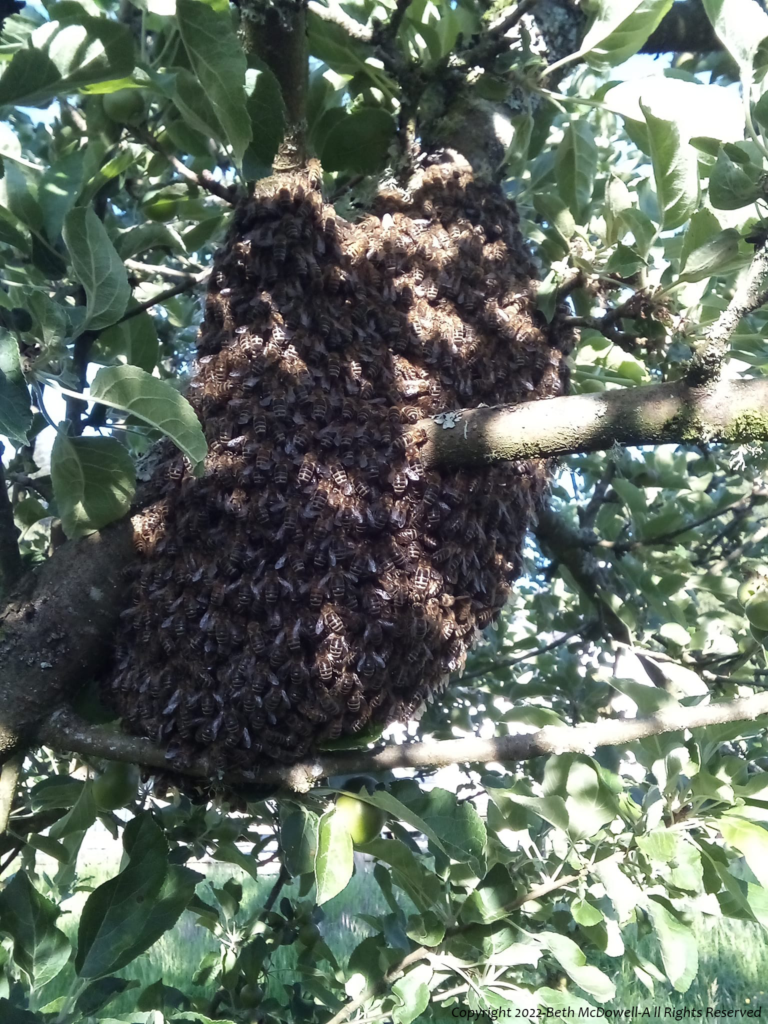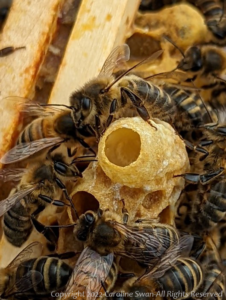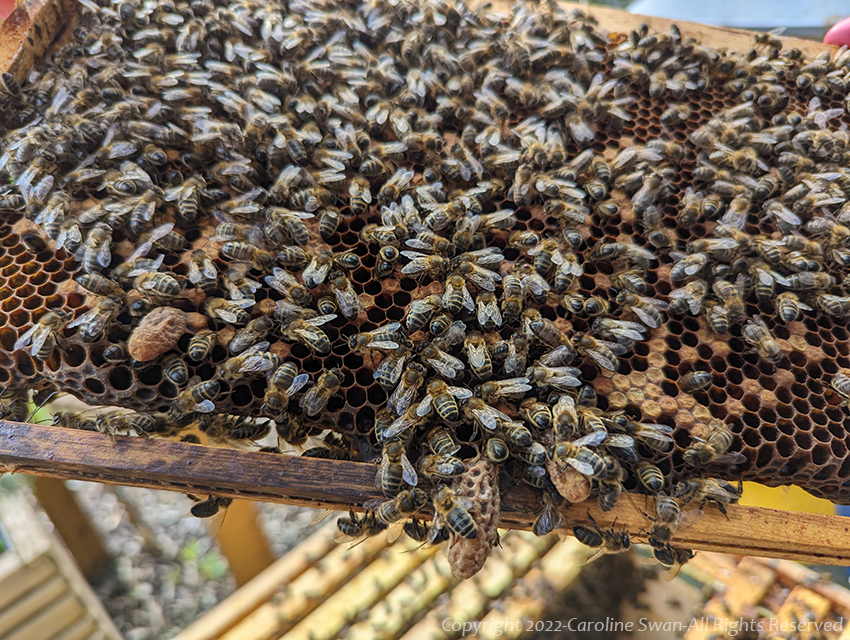More Bees, Please - Colony Reproduction
Swarms
You’ve possibly seen a swarm of honey bees – a huddled mass of ferociously noisy bees which to many people sound angry and scary. However, swarming bees are generally at their most docile and far too busy trying to find a new home to worry about you.
When thinking about bee reproduction, it is best to think of a colony of bees as a single entity; when we talk about reproduction then, we mean one colony becoming two or more colonies, rather than 50,000 bees becoming 50,001.
A swarm is what happens when the queen leaves the hive with a gathering of forager bees and sets off with them to start a new colony. The bees stop feeding the queen for a few days (so that she is light enough to fly) whereas they gorge themselves on stores to have energy for their new adventure. Having left the hive, they settle in a temporary location, very often on tree branches, while scout bees fly off to look for a new nook to set up in. This may be in the hollow in a tree trunk or perhaps in a chimney.
Incidentally, it is this gorging before swarming which is generally thought to make the bees rather docile.
The original hive
But what of the old colony? Won’t it die off when the queen leaves and there are no new eggs to become new bees? Well, before the queen and her retinue leave the hive, they create swarm cells – that is they start to raise new queens in specially crafted long queen cells. These larvae are fed differently from the normal bees. All larvae are fed royal jelly for three days; after this, the food for worker bees and drones is changed to something called brood food, but those female larvae chosen to be raised as queens continue to be fed royal jelly..
The nurse bees continue to look after the brood that’s been left behind and eventually a new queen emerges.
Sometimes, if the colony deems the hive strong enough and there are more virgin queens ready to emerge, this new queen may fly off with another portion of the bees in what is known as a cast swarm. They too will start a new colony and the virgin queen will go off on her mating flights and return to start laying the new generations.
There can actually be several cast swarms, but generally each swarm is smaller than the last and will have a harder time thriving.
Catching a swarm
Often beekeepers will be called out to collect a swarm which has settled in a less than ideal spot. With care, if the queen is found and moved into a brood box then the rest of the bees will just walk in there behind her, following her scent.
Sometimes, we put out “bait hives” – these are specially set up hives which we hope are attractive enough to the scout bees that they persuade the swarm that this is their ideal new home.
Good news for bees
While this is all good news for the honey bee with increasing numbers of colonies, it is not such good news for the beekeeper. When a swarm leaves, as mentioned previously it does so with the flying, forager bees. It is these bees who spend the final 2 to 3 weeks of their lives collecting nectar for honey so when they leave the hive, the beekeeper loses most of the hive’s potential honey production.
So beekeepers try to prevent swarms from happening, for this reason – and so as not to upset the neighbours if the swarm lands on their tree!
There are various measures beekeepers can take to try to prevent swarms from happening and some of these are effectively manipulating the development of a new colony. This is how we managed to turn our two hives from last year into five now – but more on these techniques another time!


